Published Jun 30, 2023
As Saru Left Kaminar, So Did I
How ‘The Brightest Star’ told the story of my estrangement.
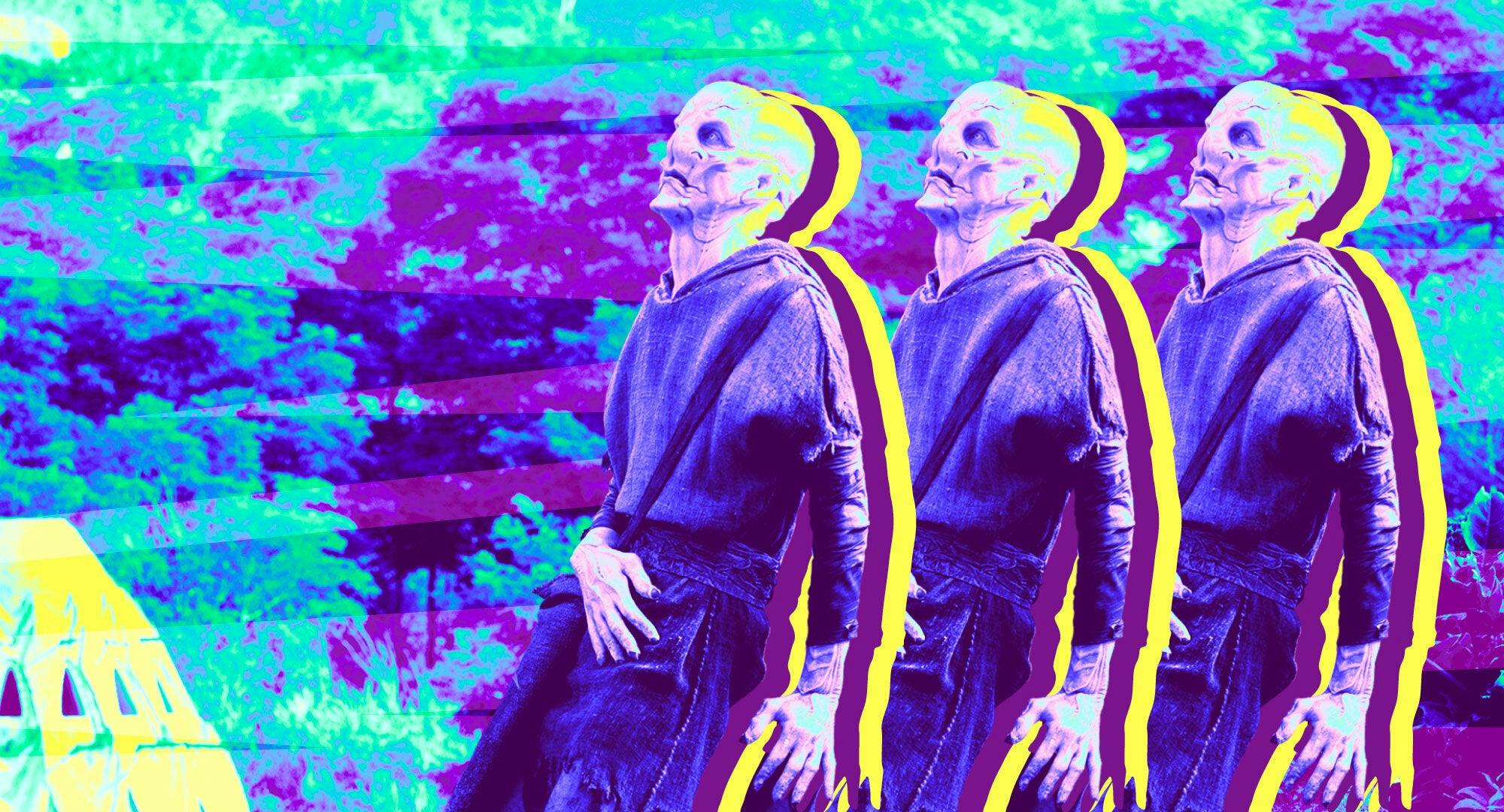
StarTrek.com
While Star Trek: Discovery's Saru’s path towards leaving his homeworld began with a stray piece of Ba’ul technology, mine began with a sticker.
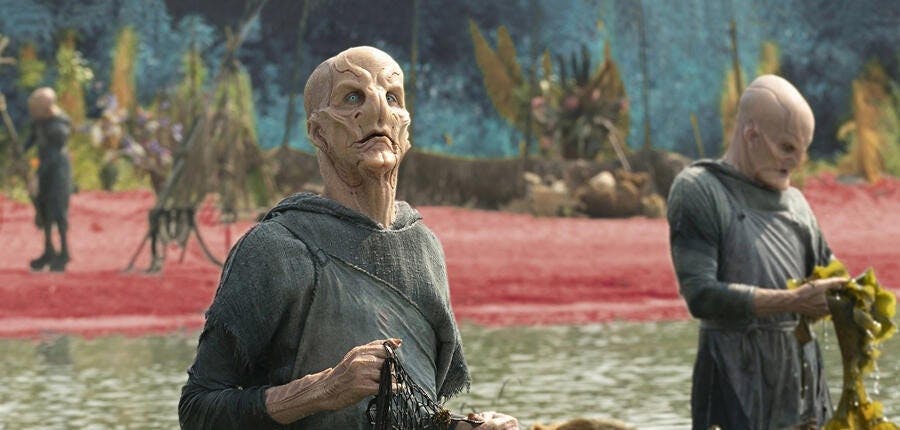
StarTrek.com
I was in my third year of college, I had a new laptop, and I was in the mood for some decoration – so I covered it in lines from musicals I love, some excellent feminist quotes, an illustration of a dragon looking very proud of itself, a giant black cat, and a small blue six-pointed star – three inches across, at most, with thin white lettering – that reads “a nice Jewish queer.”
And I was happy, my computer emblazoned with all these ideas I care about. I felt quite satisfied with my new decorations. And, like Saru’s modifications of the Ba’ul artifact to turn it into a communicator, my stickers were all little “beacons” themselves, sending messages out into the world, where someone might hear them and know that all these things are part of me.
Then I went home for the winter break.
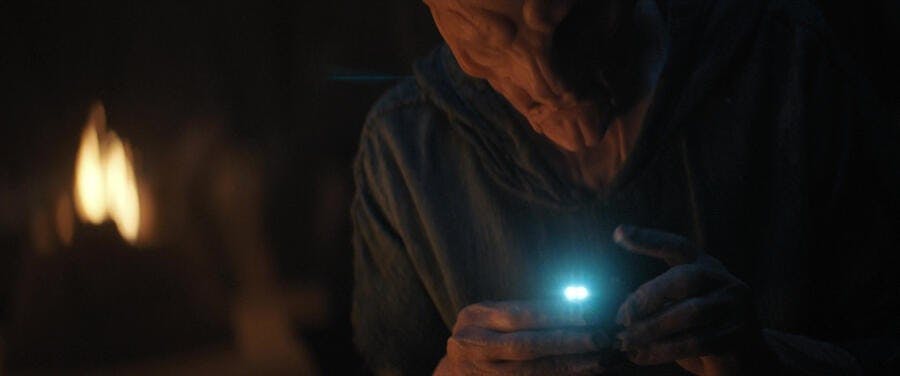
StarTrek.com
One place where my story diverges from Saru’s is that he was always aware of the Ba’ul ships hovering above him, and knew the exact terms of the self-sacrifice that would eventually be expected of him when he experienced vahar’ai. On the other hand, I was taken by surprise when my parents told me that my “nice Jewish queer” sticker made them profoundly uncomfortable. They called it an “in-your-face assault on those who would not otherwise have an opinion on your religion or sexuality,” and said I would have to take it off.
I wish I could say I had been as brave as Saru, who immediately chose to defy his father’s admonition that “to keep it is forbidden.” I wish I’d stood by my symbol of my identities. Instead, I used two strips of white first-aid tape to carefully censor the words “Jewish” and “queer” for the rest of the holiday, and for the next two weeks, I was just “a nice.”
But after ripping off the tape, the second I was on the train to the airport, I found my courage back at school. I thought about what being openly queer and choosing to claim this freedom and my beautiful community meant to me, and decided I was never going to cover the sticker again. I suppose, like Saru, I’m an optimist – I believe the universe is big and bold and grand enough to allow for star-faring Kelpiens and enthusiastically out queer people.
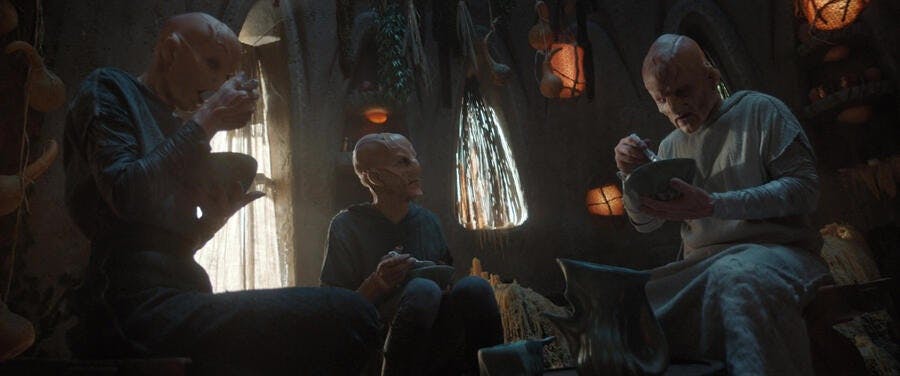
StarTrek.com
As we weighed the need to leave with the longing to be able to stay, both Saru and I found confirmation that our childhood homes could not give us what we needed most. When Saru asks his father what would happen if he attained vahar’ai by the next harvest, it is so heartbreakingly clear that he wants his father to pause, to question the way things are, and say he will protect his son from the ritual sacrifice. And when his father does none of those things – even though changing his mind would have been a radical departure for the Kelpien priest – it feels like a profound betrayal of his son’s hope.
And when I visited home, at the end of summer nearly two years ago, and my mother decided not to give me a piece of information I urgently needed, just because I had brought my computer into the room with me while I asked (information I later found on the table that had been right beside her). It may not have been a case of ritual sacrifice, but I felt betrayed as well. When she said she wouldn’t help because she “does everything for” me and I “do nothing for” her, all because I had decided not to remove my blue sticker, that little beacon of two parts of my identity I love so fiercely, I knew – as Saru knew – that “my place is no longer here.”

StarTrek.com
Like Saru, I was afraid. Even without threat ganglia, I imagine we would have had a similar internal battle between fear of the present versus the unknowable future. And still, we both eventually walked out of the places we knew were not built to hold us.
One moment I find particularly moving in “The Brightest Star” is when Saru bids farewell to his sister Siranna on the night he leaves home. When I decided I was going to leave, I knew it wouldn’t be easy, but I hadn’t expected how heartbreaking it would be to say goodbye to my parents over weeks and months when I was the only one who knew these little actions were even goodbyes.
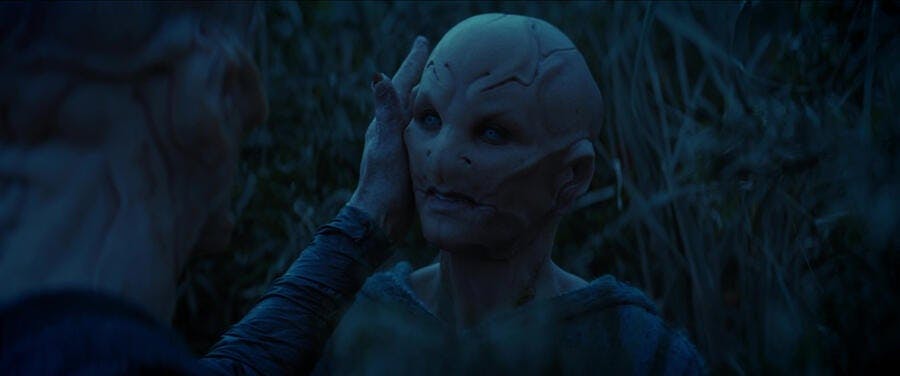
StarTrek.com
Though the day I told them I was leaving came as a shock to them, I had spent the weeks before tracking down a recording of a play I had directed to make sure my parents had the copy I had promised them, and gone with them to what I knew would be the last performance they would ever take me to, and set the TV to record the shows my mother watches – I had been marking the ends of things.
But, while there is heartbreak in leaving home, there is also a fierce and undeniable joy. Because after Saru took one last look over his village before escaping to the stars, and after I took one last picture of my dog and closed the door of the house where I grew up before spending 25 hours on a Greyhound from Montreal to Ohio, we found the freedom to live without hiding or compromising our full identities.

StarTrek.com
Saru survived vahar’ai.
I faced my fears and survived them, too — because I had found hope, and it is stronger than fear.
This article was originally published on May 22, 2020.





